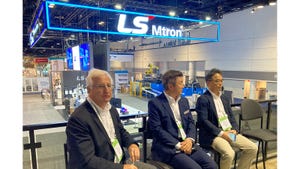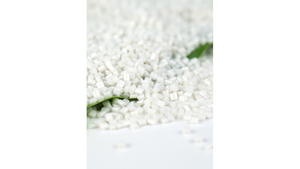Is there a best practice for pricing parts?
September 1, 2001
Editor's note: Consultant Bill Tobin of WJT Assoc. is a regular contributor to IMM and offers some insights on how to better calculate the cost of parts, taking into account all production variables.
If you overprice a quote you won't get the job. Underestimating is the equivalent of your client opening the box and mixed in with the first layer of parts is a sprinkling of $20 bills. Neither situation is good. Wouldn't it be nice if you could bid successfully and make a profit?
Estimating the price of a plastic part requires a mix of algebra, science, and a huge amount of squinty-eyed guesswork. If you study many parts and their cost components one thing immediately becomes clear: The vast majority of the costing structure is the material. In many cases it is as much as 80 percent. All too often molders simply take the material price per pound, add 10 percent, and think they've covered their costs for the material. Nothing could be further from the truth.
Cash-flow Consumption
First let's look at cash flow. Most molders bundle. This means they lump together identical materials for several jobs or purchase excess material beyond the order amount to obtain an economy of scale. While this is good business, there are hidden costs for which to account.
If you measure the time from when you purchased the material to the time you converted it into money (you cashed your client's check), you'll note you've turned into a bank for a period of four to six months. Your material purchase was probably made either through your commercial line of credit or out of the profit made from other jobs. The money you have tied up is lost profit unless you recover it in your material costing structure.
Your standard cost of material is probably a markup from your purchase price. Again, this is a mistake. If you have a job that requires 10,000 lb of material but you purchase a 40,000-lb truckload, you should charge your client the 10,000-lb price. The 30,000 lb you purchased on the cuff (bundled) might never turn into product. Thus it is at your risk. Returning it to the supplier will also cost you a restocking charge.
When you store material either in the form of pellets or molded goods, you consume floor/rack space that could be a profit center making you more money. Every time you store anything you assume the risk of spoilage. This is the risk of shipping something you molded months ago only to discover it is rejected, or you dig out the gaylord of material only to find it has been soaked by a leak in the roof or punctured by a forklift and spilled on the floor.
Second, let's look at material consumption. Assume you are making a 1-oz part and your client places an order for 16,000 pieces. The math tells us that's 1000 lb of resin. But in reality it's more. Have you considered all the nonrecyclable scrap (purgings, greasy parts, mixed material parts made during changeovers)? What about the startup and shutdown scrap? All the material consumed in the effort to produce the order should be billed to your client in the part price.
Cycle Time Costs
Now let's look at the "gotcha" known as machine cost/cycle time, the third component. Rules of thumb abound on cycle time. Some use the overall part cost as a percentage of the material and back into the machine cost component, ignoring cycle time.
Some use the rule of thumb of multiplying 150 to 250 times the thickest wall stock in decimal inches, with the answer coming out in seconds. Still others, more mathematically inclined, go through a thermodynamic analysis of heat transfer, taking the material from its melting point to below the heat distortion temperature to calculate the cooling portion of the cycle. This time is then calculated into a part price from the machine rate. Probably the best method, however, is to look at a similar part's cycle time. Failing that, many folks simply rely on history and a good guess for a cycle time.
While clients scream in horror at the sticker shock of the price of a good hot runner system ($5000/drop for the system alone if you are lucky), the payoffs are more than worth the money. If you are not making runners, you are not making the scrap or regrind that runners cause.
Runnerless molds have faster cycle times because the thickest cross section of the shot that must be cooled in a cold system is not the part but the intersection between the sprue and runner. Thus a hot runner system has a profound effect on the material consumption and machine cycle time component of cost. In all but low-volume jobs (less than 50,000 pieces lifetime volume) hot runners actually pay for themselves handsomely.
The problem with estimating cycle times and assigning the machine cost has to do with the uncertainties of reality. It is an interesting algebra calculation you should do when you are bored: Look at the hourly cost of a machine on a part with a 15-second cycle, and then look at the machine cost as you go from a single cavity to two, four, eight, and 16 cavities. While the cycle time gets slightly longer, bigger tools are more expensive, and the job must go into a bigger machine with a higher hourly cost, the machine component of the overall part cost drops with the number of cavities and doesn't increase with the machine size. This "pieces per machine hour" is more controlled by cavitation and yield than cycle time and machine billable cost.
Manipulating the Cycle
Now, let's look at the molding cycle. This is more about capacity, but many aspects of the cycle should be considered when determining costs. The filling portion of the cycle should be done as quickly as possible (.5 second or less). However, if the gate is restricted cosmetics may alter this time significantly.
The packing portion of the cycle is only effective until the gate has frozen sufficiently to disallow any more pressure being exerted on the molded part. This freeze-off time is a function of the material temperature, the mold temperature, the size of the gate, the freezing characteristics of the resin, and (in the case of hot runner systems) how well the freeze off is controlled by the heaters or valves.
While the cooling portion of the cycle can be calculated, it is actually determined by the mold's ability to cool the part evenly. This is a function of the placement and size of the cooling circuits, the temperature of the coolant, and whether the flow is turbulent or laminar.
The part cannot be ejected until it is cool enough to withstand the rigors of the ejector system. Small, pointy ejector pins can act like ice picks unless the part is quite cold. Stripper plates, on the other hand, maximize the surface area of ejection and allow shorter cooling times. Even though the mold is the most expensive place for the finished part to live, many molders use the mold as a shrink fixture to obtain optimum dimensions, so the cycle may be slowed simply to ensure dimensional stability.
A neat way to have your cake and eat it too is through the use of a water quench (ejecting warm parts into a warm water bath) or an air quench (ejecting parts onto a covered conveyer with cool air pumped over the parts). For parts with high latent heat (parts that stay hot for long periods of time) such as polyesters and cellulosics, quenching can save 10 to 15 percent of cycle time. This does not work for all parts because it can impart additional stress.
After you've molded and inspected the part (don't forget that cost), you must factor in the packaging cost before finally getting to the infamous "dollars per thousand pieces" bid you were originally looking for.
Get in the Habit
Is there a best practice? The IMM Book Club sells a spreadsheet program I wrote that in reality only makes sure you don't forget anything when estimating part cost. While it electronically does the calculations along with the volume splits, you can just as easily write your own or purchase somebody else's canned program.
Best practice is really paying attention to details. In the end you must give your cost a sanity check. Cost is the money you spent to make the part. Price is the money you expect to get for selling it. The difference between price and cost is profit—that thing that helps you grow.
There is no sin in looking at your numbers and refusing the job. It is less of a sin to look at your cost, squint at the part drawing, ignore your stated profit margins, and quote the part for what you think the market will bear. It is, after all, the market that determines the price and it's a lot easier to reduce the price than to increase it.
Since material is now a very high component of the part cost, make sure that each time there is an adjustment in your material costs that it is passed through to your client immediately. Make sure the customer understands this policy, and don't be snookered into delaying a price increase for 90 days (even if you have 30,000 lb of lower-cost material stored in your facility).
It is common in the industry to bid using a budgetary quote, and then refine the price once production has started. However, your client may think you lowballed the price simply to get the job and then are stabbing him in the heart once yields and cycle time come in. This upward price adjustment usually leads to ill feelings, and is not the way to sustain a relationship.
Getting the job is a combination of intelligent quoting, luck, strategy, and an awareness of the market. With persistence anyone can do it well.
Determining truth in costing Click here for a printable PDF file |
Many companies are using a multiplier of material weight as the sales price of their molded product. In fact, some people swear by this procedure. Others, however, think that it's highly inaccurate. We'd like to run a little test to see just how accurate this procedure is. Please fill in the following information and fax or e-mail it to Bill Tobin at (303) 604-0319 or [email protected]. A statistical analysis will be done to prove or disprove this method of costing. Results will be published in a future issue of IMM. |
part |
A |
B C D E company information (optional)Company nameE-mailPhoneFax |
Contact information |
You May Also Like


